Single Tooth Torquing Auxiliary
Benoy Mathew1, Sunil Sunny2, Denny Joseph3, George Jose Cherackal4, KP Anvar5
1 Professor, Department of Orthodontics and Detofacial Orthopaedics, Annoor Dental College, Ernakulam, Kerala, India.
2 Professor and Head, Department of Orthodontics and Detofacial Orthopaedics, Annoor Dental College, Ernakulam, Kerala, India.
3 Professor, Department of Orthodontics and Detofacial Orthopaedics, Annoor Dental College, Ernakulam, Kerala, India.
4 Reader, Department of Orthodontics and Detofacial Orthopaedics, Annoor Dental College, Ernakulam, Kerala, India.
5 Postgraduate Student, Department of Orthodontics and Detofacial Orthopaedics, Annoor Dental College, Ernakulam, Kerala, India.
NAME, ADDRESS, E-MAIL ID OF THE CORRESPONDING AUTHOR: Dr. Benoy Mathew, Professor, Department of Orthodontics and Dentofacial Orthopaedics, Annoor Dental College, Ernakulam-686673, Kerala, India.
E-mail: valia1122@gmail.com; anvar732@gmail.com
This paper demonstrates the biomechanics used in orthodontics for the labial movement of a lingually blocked out tooth. Alignment of a lingually blocked out tooth with proper expression of labial root torque is often challenging as creation of a moment to force ratio of higher than 10:1 is difficult in the oral environment. This high moment to force ratio is needed to move the root of the tooth ahead of the crown. Here, we demonstrate a very simple spring that can torque the root ahead of crown and align the teeth to the remaining dentition by maintaining the moment to force ratio in a more than 10:1 value. This will move the root ahead of crown into the medullary area and the crown follows the root into a good alignment.
Biomechanics,Lingually blocked out tooth,Moment
Introduction
In routine fixed appliance orthodontic treatment, since the moment arm is small, the torque expression is difficult to achieve. Some clinical situations like in palatally blocked out tooth, it requires torquing of individual tooth [1-3]. For this purpose, we have developed a ‘single tooth torquing auxiliary’ to torque the root ahead of crown and align the teeth to the dentition by maintaining the moment to force ratio more than 10:1.
Appliance Fabrication
Spring fabricated in 0.014 NiTi, which is shaped into a ring form with a spur at the position of tooth to be torqued. The moment generated and the force generated can be controlled by two means. That is by altering the length and angulation of the moment generator.
Parts of the Spring
The spring has three parts [Table/Fig-1]:
Picture depicting the appliance and its parts.
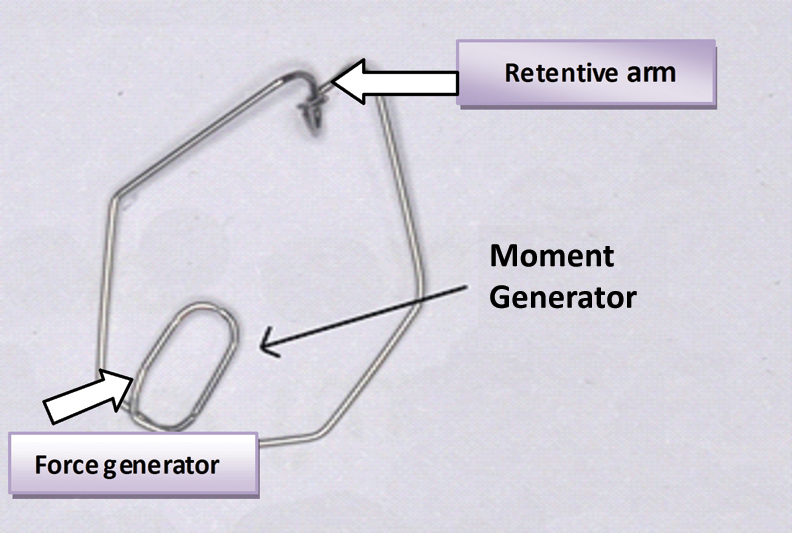
1. The retentive arm
2. The force generator
3. The moment generator
The force generator of spring is that length of the spring between the two brackets of the teeth, adjacent to palatally blocked out tooth, excluding the part of the spring that makes up the moment generator.
The coiled portion of spring is the moment generator. The moment is calculated as the product of force applied by the free end of the spring and the distance between this point and the point to which ligation is applied to the auxiliary.
The normal direct application of force on the tooth results in labial tipping of the tooth wherein the root tip moves palatally and causes dehiscence on the palatal aspect. Even at the end of treatment, the palatal drag on the root will be visible. In an ideal situation, the root must move first into the medullary space before any major crown movement. Later, the crown uprights to an ideal position. Basic biomechanics behind the action of a couple is explained in [Table/Fig-2].
Basic biomechanics behind the action of a couple.
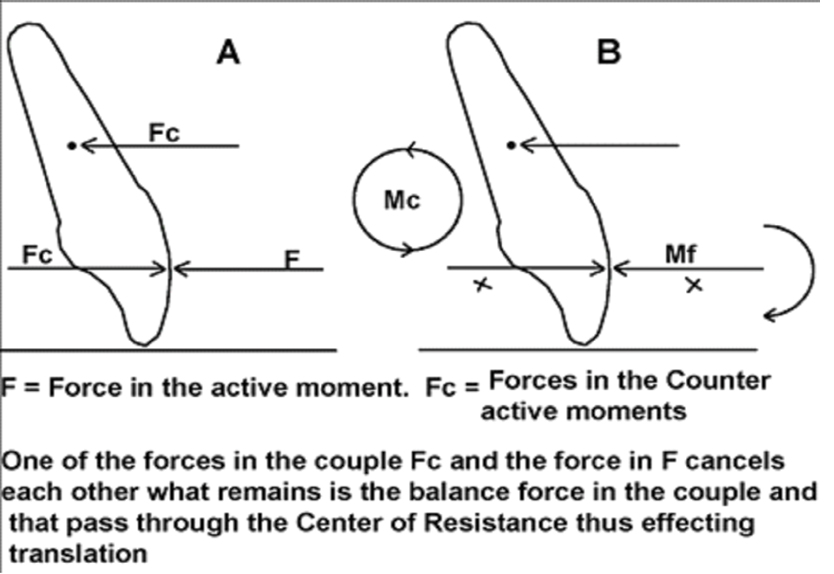
Translation of a tooth is the result of balance force in the couple and this force will pass through the centre of resistance of a tooth.
Normally while using a fixed appliance in similar situations, almost all the methods apply force initially causing the moment of force to act before the moment of couple to express. Here, this auxiliary is used before the engagement of tooth with arch wire or sectional arch wire. So it is the moment of the couple that acts first before the moment of force. Thus, moving the root first into the medullary space. As the root moves into the medullary space, the moment to force ratio reduces and reaches a level where there will be more of bodily movement of the tooth [4,5]. This happens because of the uprighting of the root in the labio-lingual direction which reduces the effect of torque and increases the effect of force. As the root movement happens, the force being applied to the crown increases, thereby increasing the moment due to force.
[Table/Fig-3] shows the position of auxiliary in typhodont. Pre-treatment and post-treatment photographs in clinical situation are depicted in [Table/Fig-4,5,6,7,8,9 and 10] to show the position of auxiliary in lingually placed #32 (Mandibular left lateral incisor).
Auxiliary positioned in typhodont teeth.
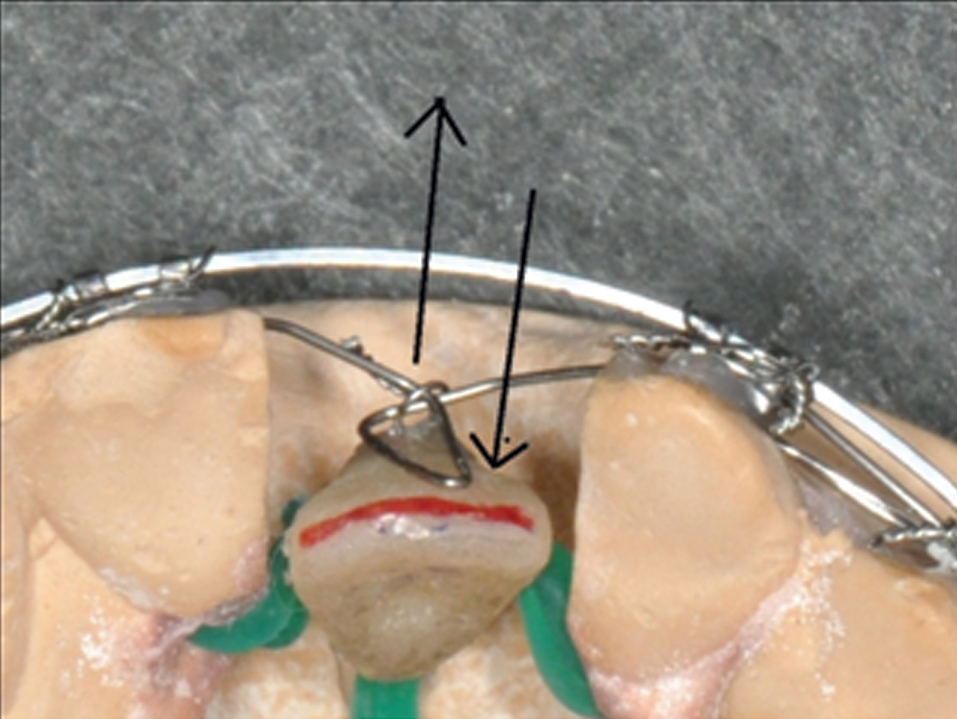
Intraoral pre treatment-frontal view.
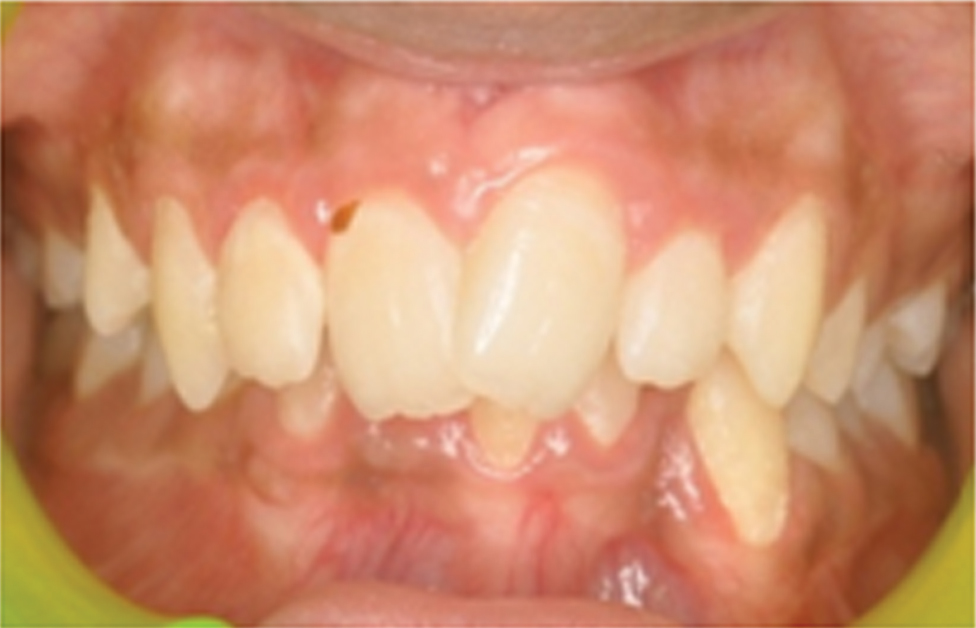
Intraoral pre treatment-occlusal view.
Note the lingually placed #32.
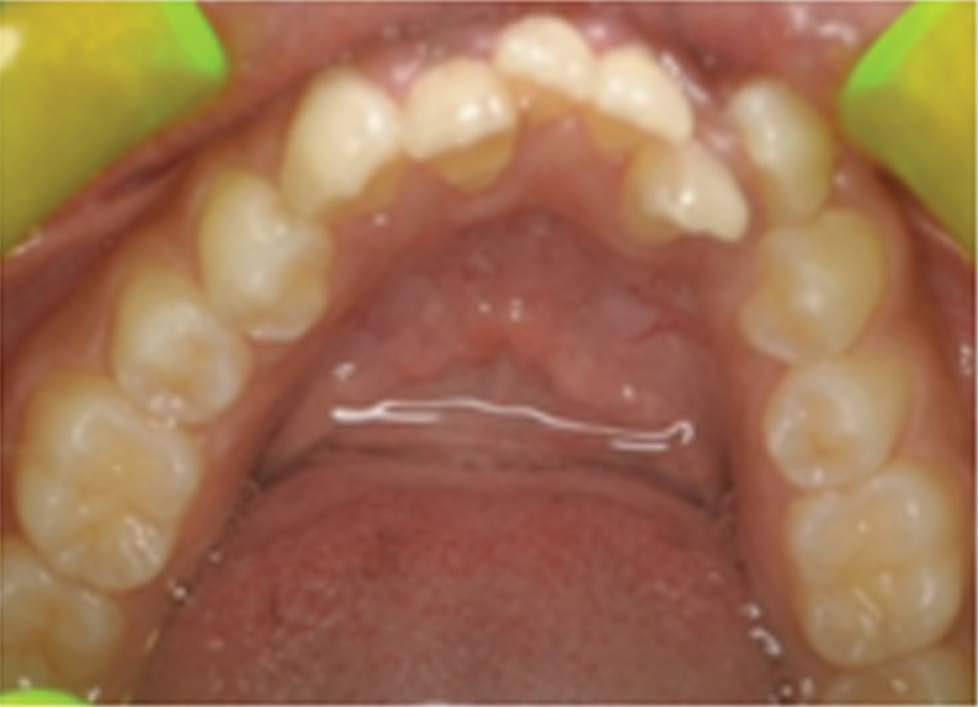
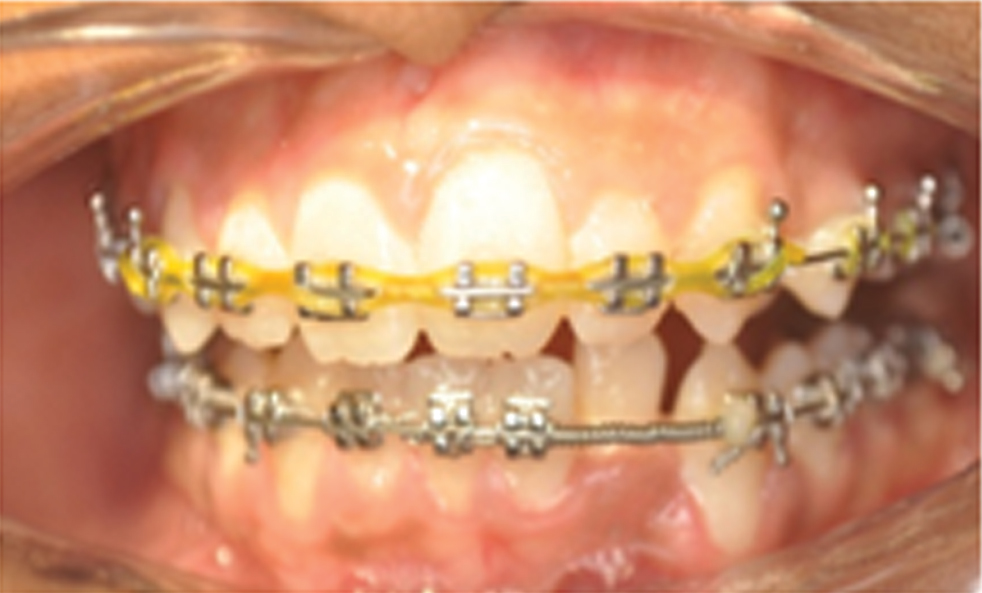
Auxilliary positioned intraorally.
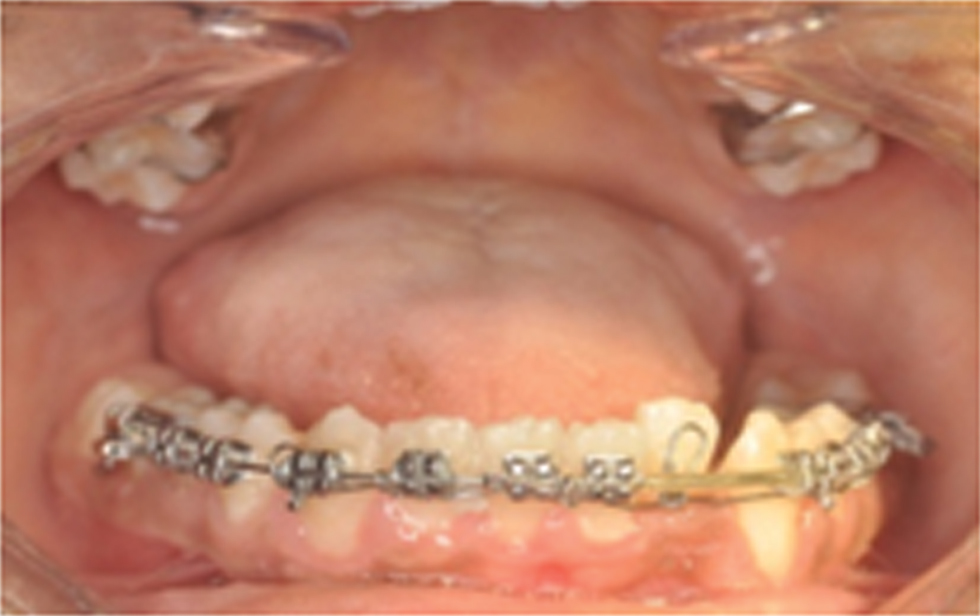
Occlusal view. Auxiliary on #32.
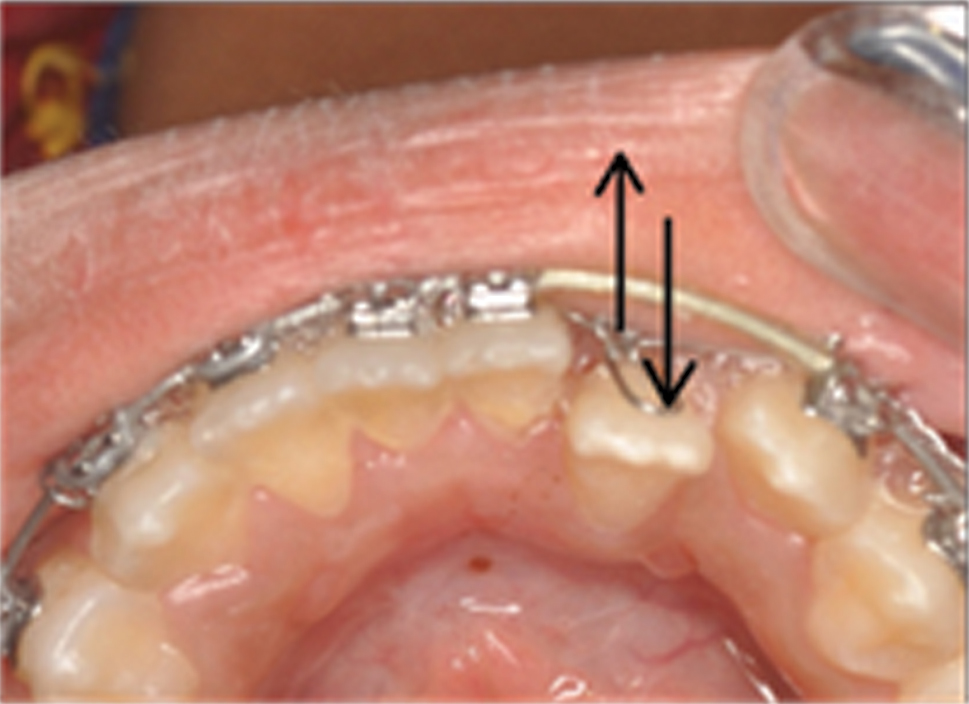
Post-treatment frontal view.
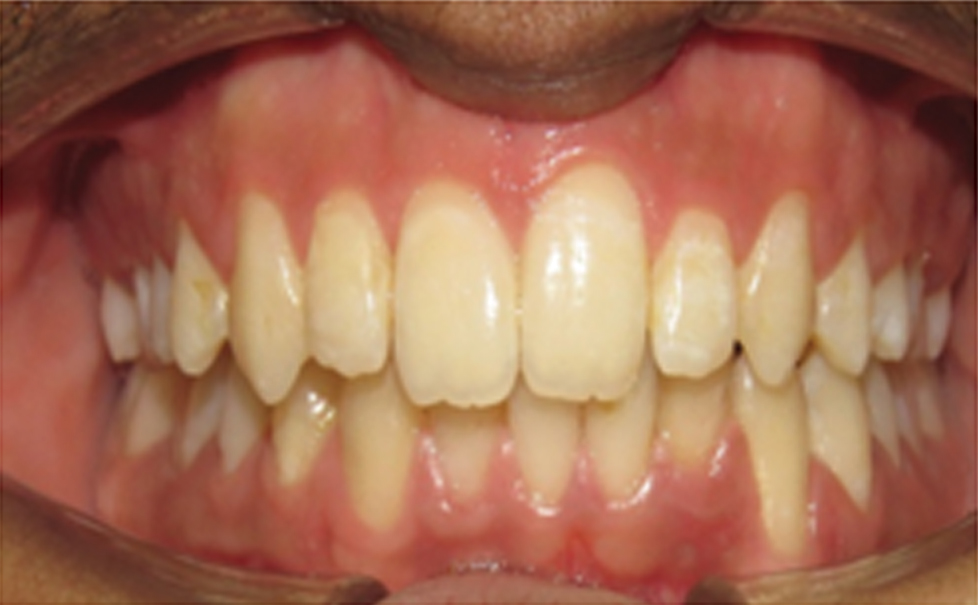
Post-treatment left lateral view to show the position of #32, which is well aligned to the arch.
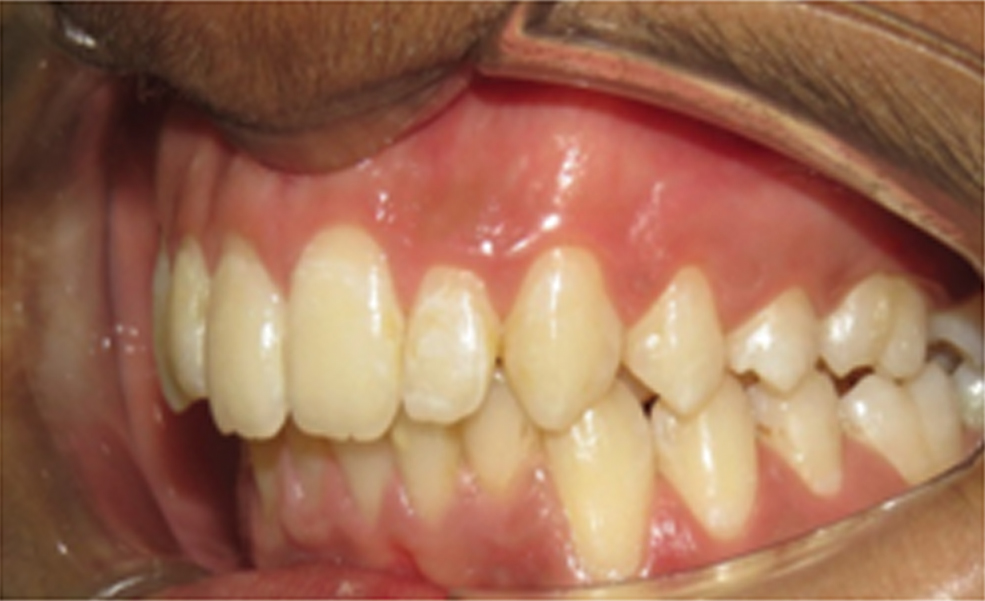
Clinical Photographs
The limitation of the auxiliary is that the palatally or lingually placed tooth needs to have space on the mesial and distal aspect to express the torque.
This auxiliary is contraindicated in the cases with severe crowding where there is no space mesially and distally to the lingually placed tooth. In such situation, torque can’t be expressed by this auxiliary.
Conclusion
The main advantage of single tooth torquing auxiliary is that the effectiveness of the torque is enhanced due to increased length of the moment arm. It is also very easy to fabricate and apply to the patient’s teeth.
[1]. Begg PR, Differential force in orthodontic treatment Am J Orthod 1956 42:481-510. [Google Scholar]
[2]. Mollenhauer B, An aligning auxiliary for ribbon arch brackets: Rectangular boxes from ultrafine high tensile wires Aust Orthod J 1990 11:219-26. [Google Scholar]
[3]. Kesling CK, Improving incisor torque control with nickel titanium torque bars J Clin Orthod 1999 33:224-30. [Google Scholar]
[4]. Kusy RP, Whitley JQ, Assessment of second-order clearances between orthodontic archwires and bracket slots via the critical contact angle for binding Angle Orthod 1999 69:71-80. [Google Scholar]
[5]. Musilli M, Acanfora M, Gherlone E, Lucchese A, Anterior torque correction with bracketless fixed orthodontics J Clin Orthod 2012 46(9):558 [Google Scholar]